The elephant king who stole hearts
The old elephant bull was a sight to behold. So impressive he was that he got crowned king on two counts.
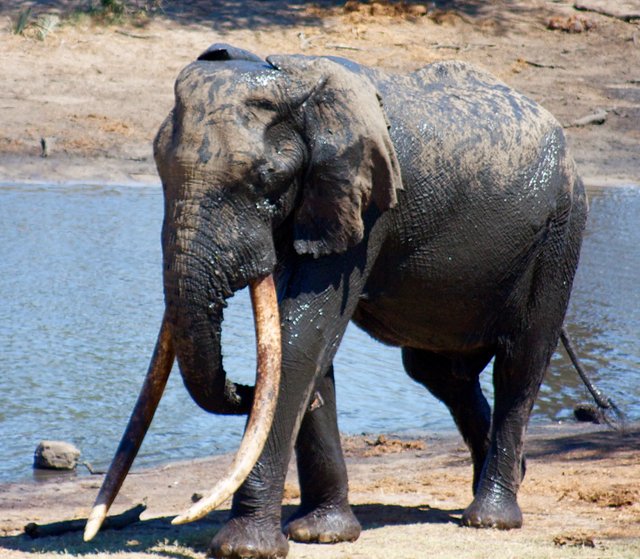
Hail to the king.
The first was his regal bearing that already in his prime earned him the name Isilo, which in the local Zulu language means king.
Then the got crowned southern Africa’s tusker king by virtue of his enormous tusks, adjudged by an elephant conservation specialist at the time to be the biggest in the sub-continent.
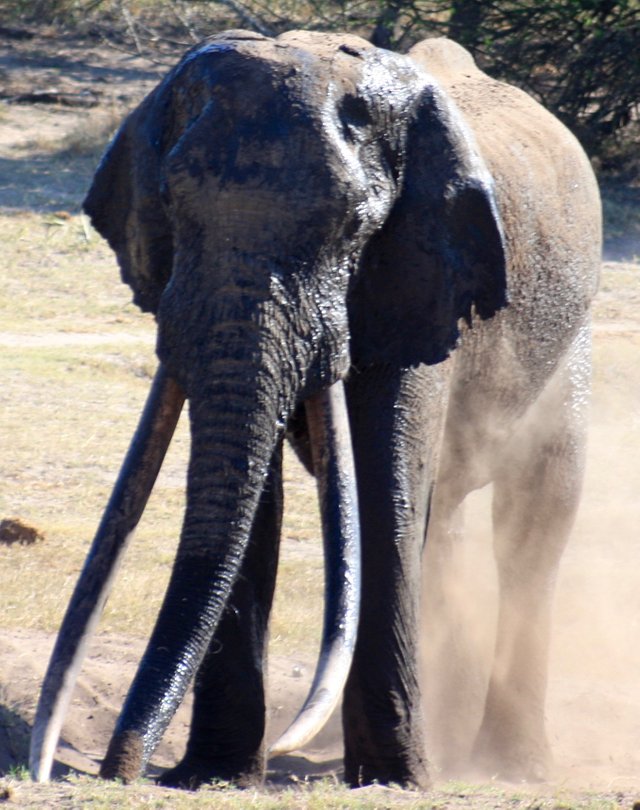
Isilo has himself a dust shower.
I remember well the occasion when I went to pay him respects at his court in the sand forests of the Tembe Elephant Park that is situated on the South African province of KwaZulu-Natal’s border with Mozambique.
I was sitting with other visitors in the reserve’s Mahlasele Hide. We were talking in hushed tones as we watched the animal comings and goings at the waterhole out front when a tour guide came panting in to tell us the king is on his way.
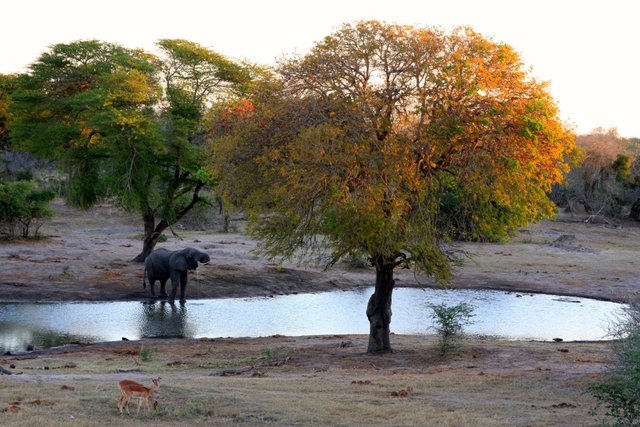
Tembe Park's favourite waterhole.
Next we saw him emerging from the undergrowth. Only the clicking of cameras broke the silence that fell over the hide. I saw tears rolling down the cheeks of a woman next to me as we watched him head slowly across the bare patch to the waterhole.
I was enthralled. I had on two previous visits to the park missed him. Once I had him turn his back on me and amble off into the bush as I lifted my camera. And now, there he was, allowing the packed hide a full photo session.
With strikingly symmetrical tusks reaching about 2.5 metres and estimated to weigh about 60 to 65 kg, he had become the park’s star attraction. Visitors on game drives wanted nothing more than to see him wander through the deep forests that cover sections of the sandy terrain that got left behind when the sea waters receded to the present Indian Ocean coastline fifty kilometers or more away.
He indeed became an international celebrity by way of the webcam trained on the waterhole that allowed people all over the world to watch his comings and goings with those of the other animals.
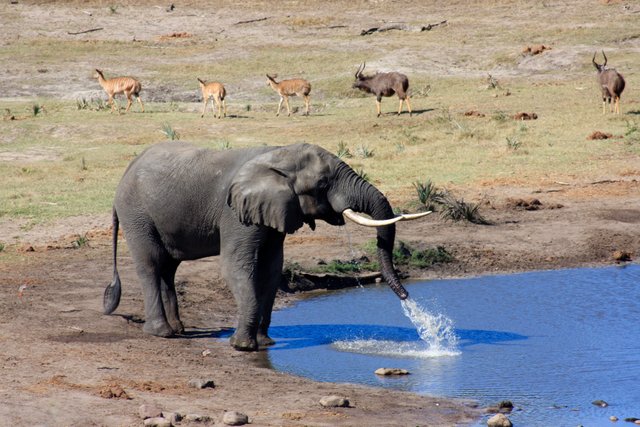
Nyala antalope take their leave as an elephant enjoys a spray.
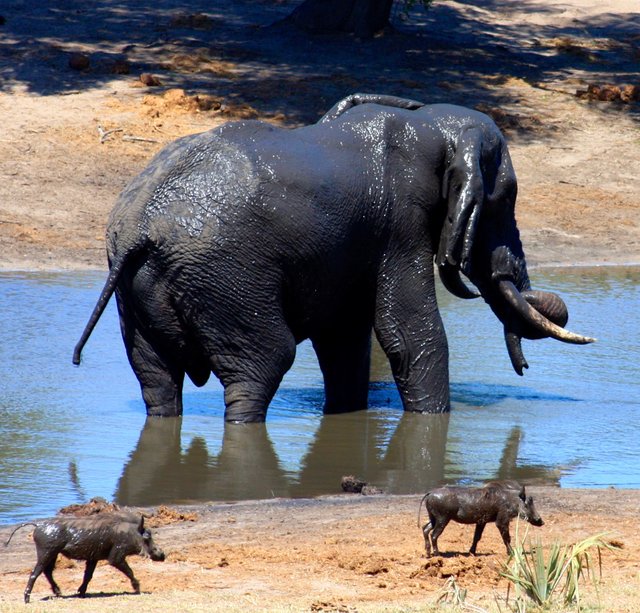
A couple of warthog keep respectfully to the shore as an elephant wades into the water.
People loved telling such stories as they had about Isilo.
A game guide told me how he once came across him resting his head on his tusks as he stood in a forest opening enjoying a mid-day siesta.
A fellow visitor told me how one night on his way back to his rest-camp chalet in the dark he found himself coming to a halt practically between the elephant’s tusks. We looked each other in the eye for a while. He just stood there calmly watching me as I retreated.
One of the park’s ecologists once told me how Isilo was allowed more liberties than the other elephants. Even when he pushed down the rest camp’s perimeter fence, he, instead of punitive action, got respectfully coaxed back into the forest. He is such a nice old creature. He is mischievous, but he is also humble. He is so special, we just put up with his antics, he said.
Isilo had an eventful life. As a youngster back in the Sixties, he would have jostled and cavorted with his mates on the plains and in the marshes of Mozambique’s Maputo and Futi river systems that run from the KwaZulu-Natal border to Mozambique’s Maputo Bay, along the shores of which the country’s then capital of Lourenço Marques and now Maputo is seated.
As a young bull he would have shown off with his mates as they hived off from the herd bravely to explore the world for themselves, away from the guiding eye of their mothers. But by the time he was ready to challenge for his own part in the mating game, disturbing changes started to happen.
The outbreak of the then Portuguese possession’s anti-colonial and subsequent civil war brought people with guns. Elephants got wildly shot at and killed. Their carcasses got cut up for meat for the soldiers and their tusks got hacked from their skulls to be traded for arms.
Survival became a matter of cunning, and of luck. Some elephants sought refuge in the dense coastal vegetation to the north-east where the Portuguese authorities in 1960 proclaimed the Maputo Elephant Park. Isilo was among the group that fled south to find succour in the sand forests across the South African border, in what in 1983 got proclaimed the Tembe Elephant Park for the specific purpose of lending protection to the threatened animals.
Still, he would have seen some of his associates getting their legs blown off by landmines and others having their trunks severed by snares. Soon the entire park had a high-security game fence around it to keep the soldiers and poachers from coming after the elephants.
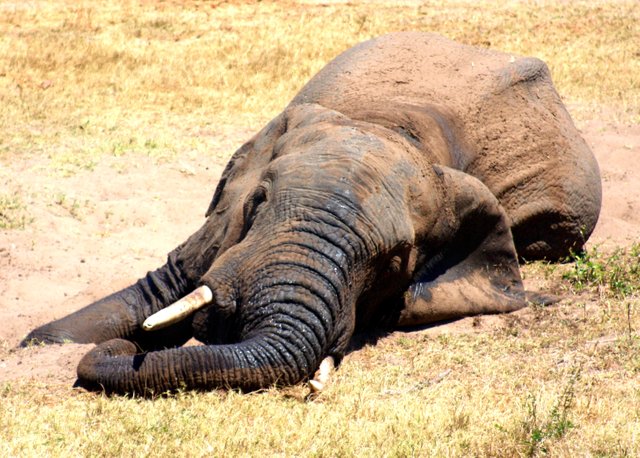
Happiness is a dust bath safe from danger.
The healthy herd Tembe’s elephants have grown to since those troubled times was on show the day we watched Isilo make his appearance at the Mahlasele waterhole. Among the elephants already there, milling about and splashing in the wet, were several enormous bulls whose tusks would soon make them pretenders to the throne.
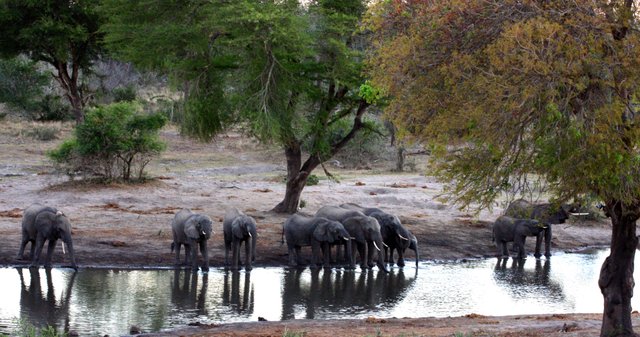
The herd troops in for a drink.
Compared to them, winter’s sparse feeding had left the old king looking frail. He enjoyed slurping water and cooling himself down for a while. But then one of the younger bulls started showing it was his time to decide who got to drink and who not.
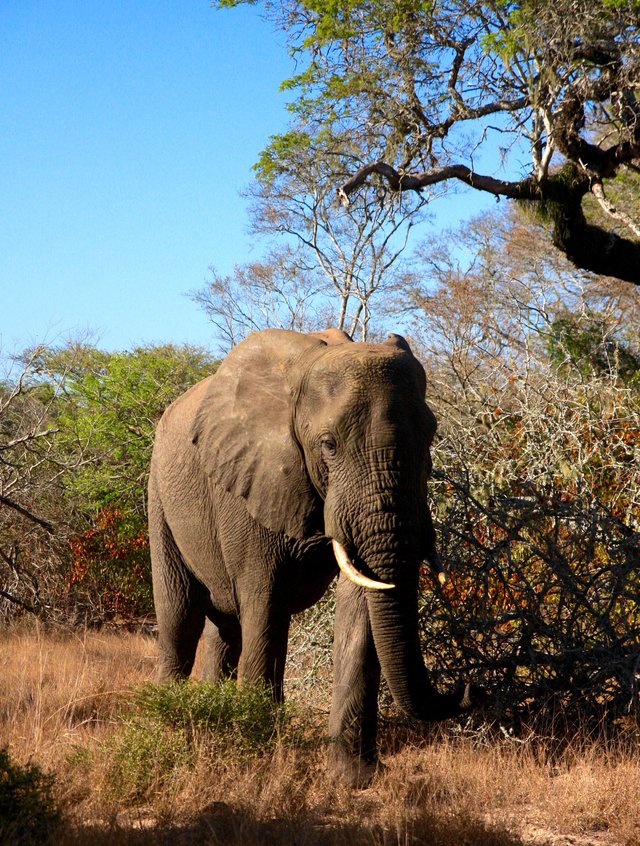
A young pretender to the throne struts his stuff.
Isilo civilly withdrew and at a distance patiently awaited his turn. He seemed in his own elephant way to quietly accept the shifts of power that came with time.
The old monarch died not many months later. It was by all signs from his carcass found in a secluded part of the reserve a natural death of old age.
But for many a wildlife lover, as for many a visitor to the Tembe Elephant Park, his memory lives on. How much so was borne out pertinently recently by a rush of pictures and stories about people’s encounters with him that appeared on the web in commemoration of his passing.
amo tudo relacionado a natureza.
I love elephants. What a lovely blog and dedication to Isilo.
Thank you. It is good to share experiences with people like you.